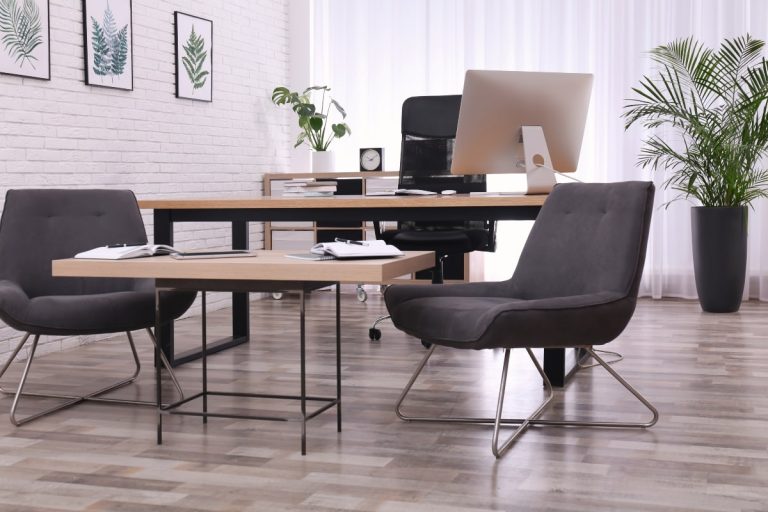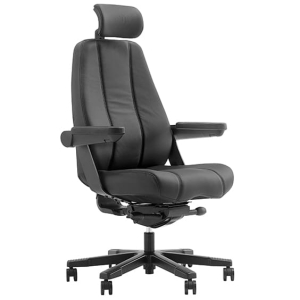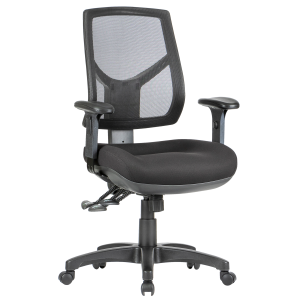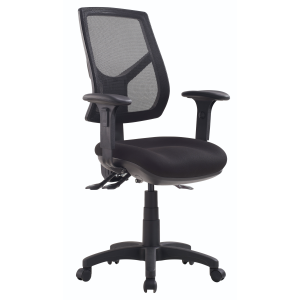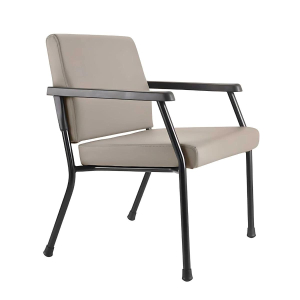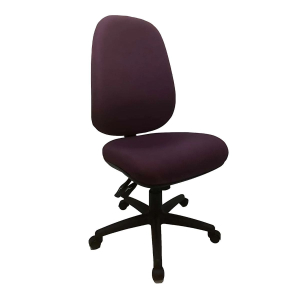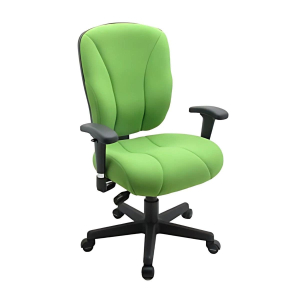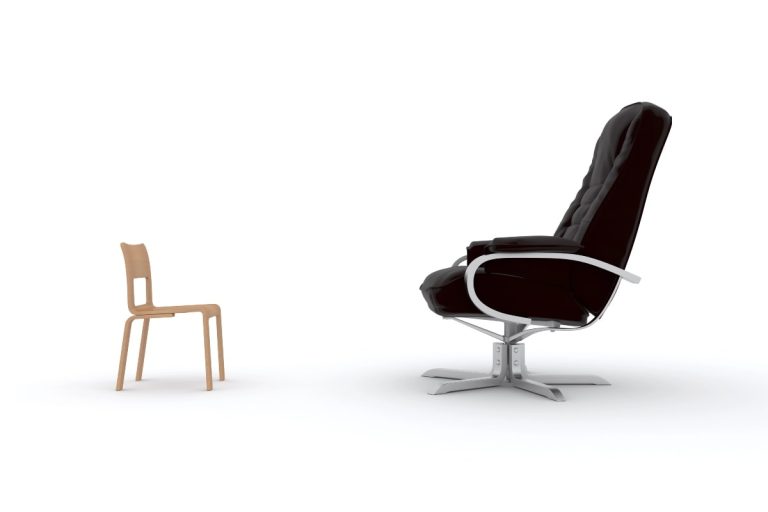The infamous crossed leg office chair has opened up a discussion in recent years about having a more relaxed and comfortable posture in the workplace. These chairs, designed with a broad seat, shorter back, and no armrests, promise to accommodate those who naturally gravitate toward sitting cross-legged.
While this might seem like a welcome change for some, it’s important to weigh the potential benefits against the possible drawbacks, especially when compared to traditional ergonomic office chairs.
The importance of ergonomic office chairs
The science of ergonomics revolves around designing products and spaces that optimise human well-being and performance. When it comes to office chairs, ergonomics plays a pivotal role in promoting good posture, reducing muscle strain, and preventing long-term health issues.
What is a cross legged office chair?
The trend of using a cross-legged desk chair has recently gained significant attention. These innovative chairs are designed to provide support while allowing users to sit cross-legged, a position many find comfortable and natural. Let’s explore whether crossed-leg office chairs live up to the hype.
Why ergonomics matter
Poor posture and prolonged sitting can lead to various problems, including lower back pain, neck pain, and musculoskeletal disorders.
Ergonomic chairs aim to address these issues by providing adequate lumbar support, adjustable features to customise the fit, and breathable materials to ensure comfort throughout the day.
How ergonomic chairs improve health and comfort
Ergonomic chairs alleviate pressure on sensitive areas and encourage healthy blood circulation by promoting proper spinal alignment and weight distribution.
This translates to reduced fatigue, improved concentration, and increased productivity. Ergonomic chairs often come with adjustable options, including armrests, headrests, and seat heights, allowing users to find their ideal position and avoid discomfort.
The appeal of cross-legged office chairs
The appeal of crossed-leg chairs is that they offer a more relaxed and comfortable alternative to traditional chairs. Sitting with your legs crossed can reduce muscle tension in the hips and promote flexibility, while the absence of armrests encourages movement and prevents slouching. Some individuals also find that this position enhances focus and creativity.
Sitting cross-legged, reminiscent of the lotus position in yoga, is often recommended for relaxation and meditation. If it’s considered beneficial on the floor, why not translate it to the office chair? Sitting cross-legged on a chair is also believed to improve posture, engage core muscles, reduce restlessness, and increase productivity.
The limitations of crossed leg chairs
Despite their appeal, crossed-leg chairs do have potential downsides. Sitting cross-legged on a chair can disrupt hip alignment, strain the spine, and increase the risk of back and neck pain. It can also restrict blood flow, causing numbness or tingling in the legs, and potentially contribute to the formation of blood clots.
The lack of armrests on these chairs can also lead to slouching, as you may find yourself leaning forward to rest your arms on your desk instead. The smaller backrest can also put more stress on the spine, negating the potential posture benefits, as this encourages a more slouched position. Over time, these can contribute to musculoskeletal issues and even chronic pain.
Sitting postures and ergonomic support
Both cross-legged chairs and ergonomic office chairs have their benefits, but ergonomic chairs offer several advantages over crossed-leg chairs:
- Posture alignment and spinal strain: Ergonomic chairs support the spine’s natural curve, reducing strain and promoting better posture.
- Hip and pelvic positioning: They ensure proper alignment of the hips and pelvis, minimising the risk of muscle imbalances and joint pain.
- Lower back support: Ergonomic chairs often include lumbar support to alleviate pressure on the lower back and prevent discomfort.
- Blood circulation: They help maintain healthy blood flow by encouraging proper positioning.
- Nerve compression: Ergonomic design minimises the risk of nerve compression, reducing numbness and tingling sensations.
- Weight distribution: They promote even weight distribution, preventing strain on specific joints and muscles.
Are crossed-legged chairs a game changer?
While crossed-leg chairs may offer temporary comfort and relaxation, their potential drawbacks outweigh the benefits, especially for long-term use. Ergonomic chairs, on the other hand, prioritise health, comfort, and productivity by promoting proper posture, reducing muscle strain, and being mindful of their design to prevent long-term health issues.
The verdict: Why ergonomic chairs win
While the allure of crossed-leg chairs is understandable, their potential drawbacks cannot be ignored. The seemingly comfortable cross-legged position may lead to long-term health issues, making this less ideal for prolonged use.
Ergonomic chairs, focusing on proper posture and support, offer a superior solution for maintaining good health and well-being in the workplace. Investing in an ergonomic chair means you’re not just choosing comfort but also promoting a healthier lifestyle.
No matter the chair, remember to incorporate regular breaks, office exercises and stretches throughout the day. This movement helps combat the adverse effects of prolonged sitting.
So, if you’re looking for a chair that truly supports your body and promotes long-term health, an ergonomic chair is the clear winner. Check out our range of ergonomic chairs designed to provide optimal support and comfort, helping you stay healthy and productive throughout your workday.
How do I choose the right office chair?
When selecting a new office chair, it’s important to prioritise your individual needs, preferences, and any existing health concerns. A comfortable seating experience is increasingly important today, as many spend long periods seated.
Here at ARTEIL, we offer a range of office chairs with an ergonomic design to do just that. These chairs are crafted to provide optimal support, encourage proper posture, and minimise strain on your body.
You can explore our range of office chairs on the website to find the perfect fit for your needs.
Frequently asked questions
As the name suggests, cross-legged office chairs are designed for individuals who prefer to sit cross-legged. They offer a broad seat, shorter back, and no armrests to accommodate this posture.
While some people find them comfortable, cross-legged sitting can strain the lower back and hips, especially with prolonged use. It may also lead to poor posture and misalignment over time.
Ergonomic chairs are a great alternative, offering proper support, adjustability, and comfort for long hours of sitting.
No, they may not be suitable for everyone, especially for individuals with mobility issues or underlying joint pain that may make it hard to sit cross-legged for extended periods.
While crossed-leg office chairs may offer benefits like increased comfort and productivity for some individuals, particularly those who prefer dynamic sitting or enjoy having their feet up, it's important to acknowledge that this chair style is not a universal solution and may not be suitable for everyone.
